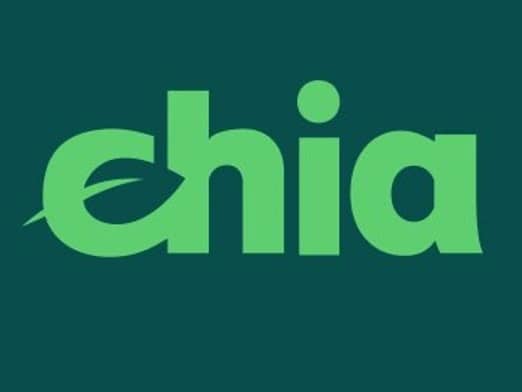위키 구독하기
Share wiki
Bookmark
Chia (XCH)
Chia (XCH)
**치아(XCH)**는 캘리포니아에 기반을 둔 회사인 Chia Network Inc.에서 만든 암호화폐이자 블록체인입니다. Chia Network는 BitTorrent의 개발자인 Bram Cohen에 의해 2017년에 설립되었습니다.[9] 치아 채굴은 비트코인(BTC)과 이더리움의 에너지 소모적인 작업 증명 모델과는 다른 시간 및 저장 공간 증명 개념을 구현합니다. 이 친환경적인 접근 방식은 하드 디스크 드라이브 및 솔리드 스테이트 드라이브와 같이 사람들이 이미 가지고 있고 추가 비용 없이 사용할 수 있는 저장 매체를 활용합니다.
개요
치아는 사용자가 생성하고 저장하는 플롯이라고 알려진 파일에 미리 저장된 데이터를 활용하는 혁신적인 암호화폐입니다. 최소한의 리소스를 소비하는 매우 효율적인 프로세스를 사용하여 치아는 이러한 p[1]lot 파일에 공간 및 시간 증명을 검증합니다. 이러한 접근 방식은 치아가 놀라운 속도로 작동하면서 친환경적인 영향을 유지하도록 합니다. Chia Network는 자체 암호화폐인 Chia(XCH)를 통해 지불 결제를 용이하게 하는 분산형 오픈소스 블록체인 네트워크를 구축하는 것을 목표로 합니다. 이 네트워크는 기존의 국제 지불 및 금융 인프라를 개선하고 디지털 통화 솔루션을 제공하도록 설계되었습니다. Chia Network는 자산 토큰화, 분산형 거래소(DEX), 분산형 금융(DeFi) 및 효율적인 국경 간 개인 지불을 포함한 치아의 다양한 사용 사례를 구상하고 있습니다.
기술
Chia Network에 따르면, 그들의 시간 및 공간 증명(PoST)은 작업 증명 이후 나카모토 합의 알고리즘이며, 에너지 소비량도 훨씬 적습니다. 이 알고리즘은 네트워크에 대한 리소스 할당을 검증하기 위해 사용하지 않는 하드 드라이브 공간을 활용합니다. 치아의 메인넷 일부는 2021년 3월 19일에 출시되었습니다. CAT(Chia Asset Token)[5], 대체 불가능 토큰(NFT), 오퍼 및 DID(분산 식별자)에 대한 기본 요소가 출시되면서 생태계 개발이 진행 중입니다.
공간 증명 메커니즘에서 농부들은 사용하지 않는 하드 드라이브 공간 할당에 대한 증거를 제공합니다. 시간 증명은 공격에 대한 저항력을 높여 블록체인의 보안을 강화합니다. 치아의 1.1 버전 합의는 대부분의 시나리오에서 51% 공격을 방지하기 위해 특별히 설계되었습니다. 작업 증명 블록체인과 비교하여 치아는 유사한 수준의 보안을 유지하면서 더욱 에너지 효율적이고 포괄적인 접근 방식을 제공합니다. 지분 증명 블록체인과 달리 치아는 공격 및 조작에 대한 취약성이 적어 스테이킹으로 인해 발생할 수 있는 부의 집중 및 중앙 집중화와 같은 문제를 방지합니다.[1]
Chialisp
Chialisp는 함수형 언어 Lisp를 기반으로 Chia Network에서 개발한 스마트 코인 언어입니다. Chia 블록체인 생태계에서 모든 요소는 코인으로 표현됩니다. 스마트 코인은 스마트 계약과 스마트 트랜잭션 기능을 하나의 패키지로 제공합니다. Chialisp는 강력하고 광범위한 기능을 제공하면서 보안과 단순성을 우선시하도록 설계되었습니다. 특히 지불 및 금융 사용 사례에 맞게 조정된 Chia Network 블록체인에서 실행되는 애플리케이션의 기반 역할을 합니다. Chialisp를 사용하여 개발자는 지불 처리 및 다양한 금융 애플리케이션의 요구 사항을 충족하는 강력하고 다용도의 애플리케이션을 만들 수 있습니다. Chia Network는 치아 개발자를 지원하고 소프트웨어 지원 및 치아 대출을 통해 치아의 기업 사용을 지원합니다.[2]
Chai Asset Token
Chia Asset Tokens(CAT)는 Chia 블록체인에서 발행되는 대체 가능한 토큰입니다. CAT 퍼즐은 특정 CAT의 공급이 해당 CAT에 대한 특정 발행 규칙을 따르지 않는 한 일정하게 유지되도록 보장합니다. 이는 토큰 및 자산 발행 제한(TAIL)이라는 Chialisp 프로그램을 통해 시행됩니다. 내부 퍼즐은 코인의 소유권을 결정하며, 사용될 때 새로운 퍼즐은 다시 CAT에 래핑됩니다. 일반적으로 CAT를 Chia 지갑 주소로 보내려면 표준 트랜잭션을 래핑합니다.[11].
Colored Coin
Chia Networks의 컬러드 코인은 대체 코인, 자산 및 스테이블 코인 발행에 사용되는 Chialisp의 가장 강력한 스마트 트랜잭션입니다. 이는 비트코인의 Omni 및 이더리움의 ERC-20과 같은 프로토콜 구현을 지원합니다. 치아의 컬러드 코인은 미완성 트랜잭션을 생성하고 배포할 수 있는 "오퍼"라는 고유한 기능을 도입합니다. 컬러드 코인 오퍼를 사용하면 치아를 소각하면서 새로운 컬러드 코인을 생성할 수 있습니다. 이러한 오퍼는 다른 사람들과 공유할 수 있으며, 누구든지 자신의 쪽에서 트랜잭션을 완료할 수 있습니다. 이를 통해 컬러드 코인을 쉽게 배포하고 전송할 수 있습니다.[10].
스테이블 코인 발행자의 경우 컬러드 코인 오퍼는 최종 사용자가 스테이블 코인을 사용하고, 자체 코인을 사용하여 트랜잭션 수수료를 지불하고, 이러한 작업이 Chia 블록체인에서 발생한다는 사실을 알지 못하도록 하는 애플리케이션을 만드는 방법을 제공합니다.[10] 새로운 토큰을 생성하고 실험하는 것만큼 간단합니다. Chia에서 제공하는 온체인 프로그래밍 환경은 이 프로세스를 더욱 쉽고 간단하게 만듭니다.
잘못된 내용이 있나요?
